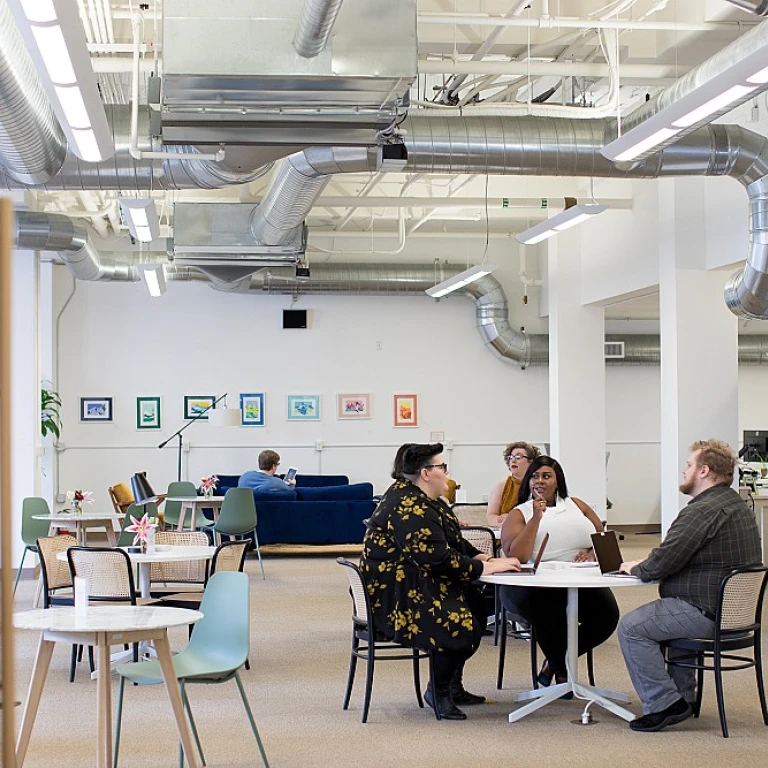
Defining Skill and Talent
Unraveling the Concepts of Skill and Talent
In today's rapidly evolving job market, understanding the difference between skill and talent is crucial for both employers and aspiring professionals. While the terms are often used interchangeably, they hold distinct meanings that shape how we approach personal development and hiring practices.
Skill refers to the learned ability to perform a specific task effectively. It relies on practice, dedication, and experience. Whether it's a technical proficiency or a soft skill like communication, skills are honed over time through intentional effort and training. For instance, a person might develop skills in data analysis by engaging in continuous learning and practice over several years.
On the other hand, Talent is often seen as a natural aptitude or innate ability that a person is born with. While having a raw talent can provide an initial advantage in fields like art or music, relying solely on talent without putting in the necessary time and effort can limit growth.
The concepts of skill and talent are further complicated when we consider that a talent can also become a skill with the right nurturing environment and continued practice. In the workplace, talent management and skill development go hand in hand to ensure that individuals can reach their full potential and contribute positively to the organization.
By recognizing the distinction between skill and talent, we can better appreciate how these elements work together to help people excel in their professions. It's essential to foster a culture where both skills and natural talents are continuously developed and aligned with the demands of the job market.
The Role of Skill in Bridging the Skills Gap
The Vital Role of Skill in Addressing Gaps
In the dynamic landscape of employment, skill serves as a pivotal element in bridging the skills gap. Unlike natural talent, which many consider an innate ability, skills are cultivated through dedicated time and practice. This distinction underscores the role of effort and persistence in enhancing a person’s capabilities for better job performance.
The importance of skills cannot be overstated in talent management and acquisition. Modern workplaces demand a blend of both hard and soft skills, tailored to specific roles. As industries evolve, the need for skilled professionals surpasses the reliance on raw talent alone. Hiring practices now favor individuals who demonstrate the ability to learn and refine their abilities over time.
People are recognizing that skills, unlike talents, are not as limited by natural boundaries. This realization paves the way for comprehensive training programs aimed at building skills systematically. Such initiatives equip individuals to adapt to new challenges, promote career advancement, and fill existing skills gaps.
Moreover, skills acquisition is increasingly intertwined with technology. Emerging tech tools facilitate skill development, offering flexible learning paths that suit diverse lifestyles. By leveraging technology, people globally can access resources and education tailored to their needs, proving that time and effort are key to skill mastery.
Talent: A Natural Advantage or a Limiting Factor?
A Natural Advantage or a Limiting Factor?
In the discussion of skill versus talent, one might wonder if talent, being a natural advantage, places individuals on a pedestal that others can't reach without putting in the effort and time. Does talent imply that a person is inherently better at a particular job? Talent is often seen as an innate ability that some people are just born with. However, while talent might give someone a head start, it should not be seen as the only determinant of success.
Research suggests that individuals who combine their raw talent with consistent hard work and dedication are the ones who excel. An ability skill can be honed with practice, making someone proficient over time. It’s about balancing the talent skill with deliberate skill development strategies. Understanding this balance is crucial in fields where talent management and talent acquisition are pivotal to sourcing the right fit for roles.
Talented individuals often find themselves progressing rapidly, but this does not mean that skills derived from hard work and will cannot surpass talents. Through consistent efforts, anyone can learn to be just as good, if not better, by focusing on building skills relevant to their job. For hiring professionals, the difference talent brings can be essential. However, recognizing ability and nurturing skill can be equally important.
So, is talent a limiting factor? Not when measured against perseverance and continuous improvement. In the current job landscape, employers are frequently identifying the need for both soft skills and hard work. Investing time in developing these skills can bridge the skills gap, leading to better outcomes in the workforce. Moreover, for people in hiring roles, leveraging such insights can help in effective 1-on-1 meetings with your manager, fostering a culture of growth and improvement over reliance solely on natural ability.
Skill Development Strategies
Strategies for Developing Skills: A Pathway to Overcoming the Skills Gap
To bridge the skills gap effectively, individuals and organizations need to adopt targeted strategies for skill development. While natural talent plays a role, it's the deliberate cultivation of skills that leads to success in the workplace. Here are some approaches to consider:- Continuous Learning and Practice: A person's ability to grow their skills depends on the time and effort they are willing to invest in learning. Engaging in regular training sessions, workshops, and courses provides exposure to new concepts and techniques. Practice over time helps in honing abilities and refining skills, making a person better suited for job roles that require specific expertise.
- On-the-Job Experience: Gaining real-world experience is invaluable. Practical exposure to work environments enables individuals to apply their knowledge and develop soft skills like communication and teamwork. This hands-on approach is crucial in talent management and helps distinguish between talent skill and hard work.
- Utilizing Feedback: Constructive feedback serves as a guide for improvement. Whether it's from mentors, colleagues, or supervisors, understanding one's strengths and weaknesses can lead to significant personal growth. This encourages a cycle of continuous learning, ultimately enhancing an individual's talent skills.
- Mentorship Programs: Learning from talented people who have amassed experience over time is beneficial. Undergoing mentorship provides guidance and insight into industry best practices, thereby fostering the development of both ability skills and soft skills in a supportive environment.
- Leveraging Technology: In a rapidly evolving technological landscape, digital tools and platforms provide new avenues for skill building. Online courses, e-learning modules, and virtual simulations offer flexible learning opportunities that can effectively enhance one's abilities.
The Impact of Technology on Skill and Talent
Technological Advancements and Their Influence on Skills
The rapid pace of technological advancements is transforming not only industries but also the skills needed to thrive within them. As technology automates routine tasks, the demand for skills that exhibit human creativity, problem-solving, and emotional intelligence remains crucial. These skills, often referred to as soft skills, are becoming even more essential in the workforce.
The role of technology in skill and talent development is multifaceted. On one hand, it provides tools that facilitate faster learning and training. Online courses and digital platforms make building skills more accessible than ever, allowing people to learn at their own pace and time, honing their abilities without geographical limitations.
On the other hand, technology also emphasizes the importance of staying current. Keeping one's skill set relevant in this fast-evolving environment requires commitment and will. Regular updates and practice are necessary to ensure that one’s abilities align with industry standards, reducing the skills gap further.
Talent & Skill: Coexistence in a Technological Era
While natural talent can give individuals a head start, consistent effort, and practice are often the differentiators in who excels in a rapidly changing job landscape. Talent management strategies now include enhancing both raw talent and learned skills, ensuring people can adapt to new technological environments.
Technology provides feedback loops through data collection and analysis, enabling a personalized approach to skill evaluation, helping individuals understand their strengths and areas needing improvement. This data-driven talent management approach helps organizations in hiring decisions by focusing on matching persons to roles where their talents and skills can flourish.
The future, therefore, lies in cultivating a culture where talent acquisition isn't just about finding naturally talented people, but also about encouraging continuous learning and adaptability. By balancing these elements, organizations can equip their workforce with the necessary skills to thrive in today’s world.












